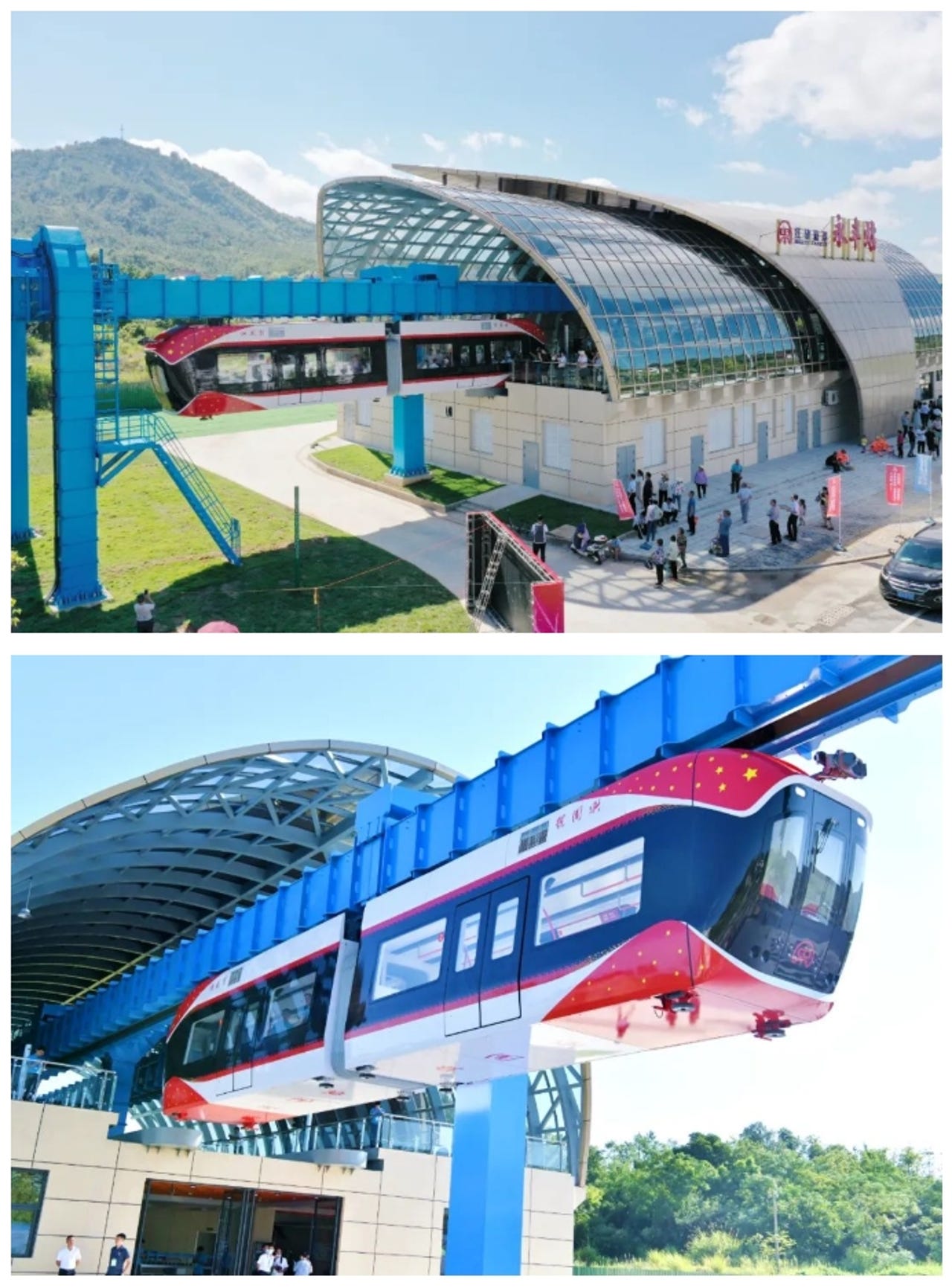































 Image: http://www.xingguo.gov.cn
Image: http://www.xingguo.gov.cn China this month launched its Red Rail, which is the world's first suspended maglev line, according to a South China Morning Post article. The maglev "sky train" can stay afloat using permanent magnets, even without the presence of a power supply.
The 2,600-foot-long experimental rail is located in Southern China. A typical maglev train glides above its track, supported by magnetic repulsion and propelled by a linear motor. This one, however, moves underneath its track at a speed of 50 mph. It operates about 32 feet above the ground and makes no physical contact with the rail.
SEE:S?o Paulo subway ordered to suspend use of facial recognition
After some test runs, local authorities said the line could even increase to 4.7 miles and its top operational speed can reach 75 mph.
The Red Rail uses powerful magnets that produce a constantly repelling force strong enough to suspend a train with 88 passengers in the air. There are permanent magnets in both the rail and the arm that surrounds the train, causing the arm and the train to repel each other and suspend the train.
The floating train is more efficient than the maglev alternatives because only a small amount of electricity is needed to propel the train, the technology generates little electromagnetic radiation and its construction cost is a tenth of that to build a subway, according to the researchers at Jiangxi University of Science and Technology.
SEE: Artificial intelligence: 5 innovative applications that could change everything
Maglev lines that utilize electricity negatively impact the environment because the strong electromagnetic field they generate can affect surrounding areas, including the health of people living nearby.
Despite all the benefits, there are many challenges to the floating maglev technology including keeping the train's stability in an unpowered floating state. The researchers have made breakthroughs in train control and operational safety using new technologies, such as AI.
It looks like this technology might not be reaching the US anytime soon. For one thing, China dominates the rare Earth supply, controlling more than 80% of the permanent magnet production capacity in the world.
 Горячие метки:
3. Инновации
1. Транспорт
Горячие метки:
3. Инновации
1. Транспорт